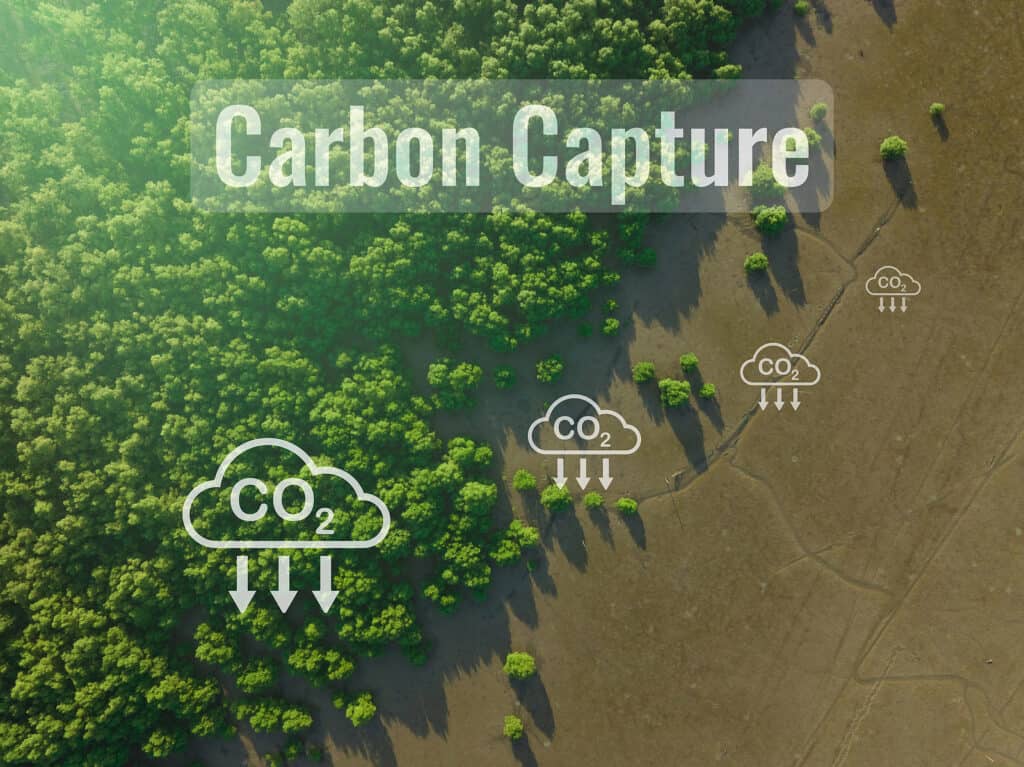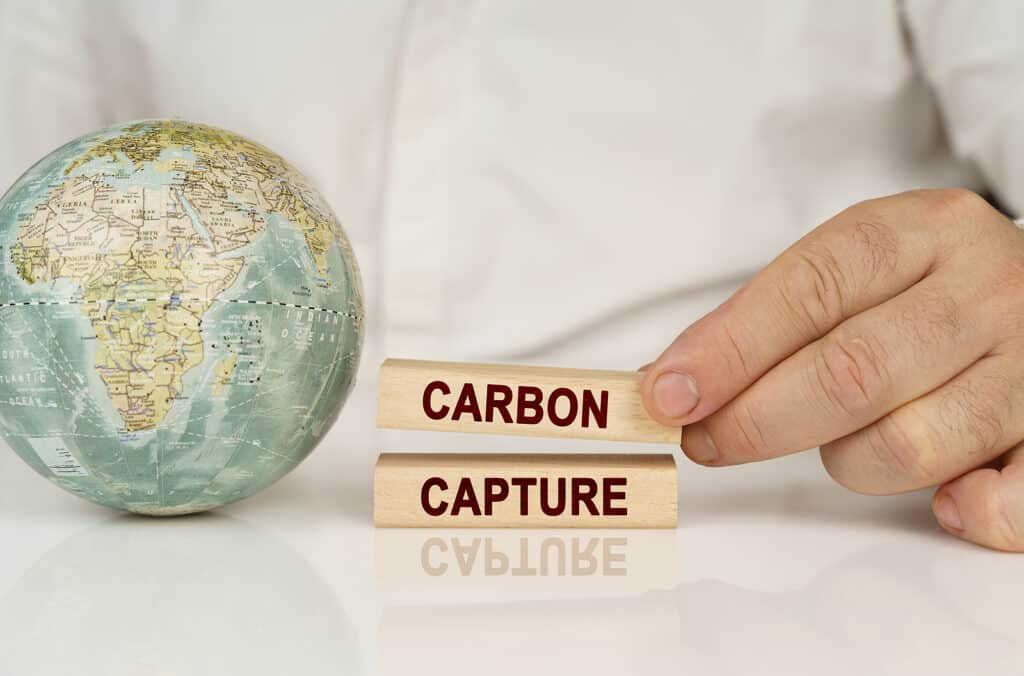Carbon capture technology is gaining immense popularity worldwide due to its ability to capture and store carbon dioxide from industrial processes, power plants, and other sources of greenhouse gas emissions. This technology can help mitigate the effects of climate change and reduce the carbon footprint of various industries. The Union Public Service Commission (UPSC) candidates who are preparing for the civil services examination must be well-versed with the latest advances in carbon capture technology, its significance, and its impact on the environment.
What is Carbon Capture Technology?

Carbon capture technology is a vital tool in mitigating climate change by reducing greenhouse gas emissions. The process begins with the capture of carbon dioxide (CO2) from various sources, including industrial processes and power plants. The capture step involves separating CO2 from other gases, such as nitrogen and oxygen, through a variety of methods, including chemical absorption, adsorption, and membrane separation. The captured CO2 is then compressed and transported via pipeline, ship, or truck to a suitable storage site.
In the storage step, the CO2 is injected into geological formations, such as deep saline aquifers, or depleted oil and gas reservoirs, where it is permanently stored underground. This process is known as carbon capture and storage (CCS) or carbon capture, utilization, and storage (CCUS). The storage site must be carefully selected to ensure the long-term safety and stability of the stored CO2.
Carbon capture technology is a promising solution to reducing carbon emissions, but it is not without its challenges. The capture process can be energy-intensive and expensive, and the transportation and storage steps require careful planning and management to ensure safety and minimize leakage. Despite these challenges, the potential benefits of carbon capture technology make it an essential component of the global effort to combat climate change.
The Significance of Carbon Capture Technology
Carbon capture technology is significant for the following reasons:
- Reduces Carbon Emissions: Carbon capture technology reduces carbon emissions by capturing CO2 from various industrial processes, power plants, and other sources of greenhouse gas emissions.
- Mitigates Climate Change: Carbon capture technology can help mitigate the effects of climate change by reducing the amount of CO2 released into the atmosphere.
- Improves Air Quality: Carbon capture technology improves air quality by reducing the amount of pollutants emitted into the atmosphere.
- Enables Sustainable Development: Carbon capture technology enables sustainable development by reducing the carbon footprint of various industries, which is crucial for achieving sustainable development goals.
The Latest Advances in Carbon Capture Technology
The latest advances in carbon capture technology include the following:
- Direct Air Capture (DAC): Direct air capture is a technology that captures CO2 from ambient air. This technology uses chemical processes to capture CO2 and produce a concentrated stream of CO2 that can be stored underground.
- Carbon Capture and Utilization (CCU): Carbon capture and utilization is a technology that captures CO2 from industrial processes and converts it into useful products such as chemicals, fuels, and building materials.
- Carbon Capture and Storage (CCS): Carbon capture and storage is a technology that captures CO2 from industrial processes and stores it underground in geological formations or in depleted oil and gas reservoirs.
- Biomass with Carbon Capture and Storage (BioCCS): Biomass with carbon capture and storage is a technology that captures CO2 from biomass and stores it underground in geological formations or in depleted oil and gas reservoirs.
- Chemical Looping Combustion (CLC): Chemical looping combustion is a technology that uses metal oxide particles to capture CO2 from industrial processes and power plants. The metal oxide particles are then regenerated by adding oxygen, which releases pure CO2 that can be stored underground.
The Impact of Carbon Capture Technology on the Environment

Carbon capture technology has a positive impact on the environment. Here are some of the ways carbon capture technology benefits the environment:
- Reduces Greenhouse Gas Emissions: Carbon capture technology reduces greenhouse gas emissions by capturing CO2 from industrial processes, power plants, and other sources of greenhouse gas emissions.
- Mitigates Climate Change: Carbon capture technology helps mitigate the effects of climate change by reducing the amount of CO2 released into the atmosphere.
- Improves Air Quality: Carbon capture technology improves air quality by reducing the amount of pollutants emitted into the atmosphere.
- Enables Sustainable Development: Carbon capture technology enables sustainable development by reducing the carbon footprint of various industries, which is crucial for achieving sustainable development goals.
- Enables the Use of Fossil Fuels: Carbon capture technology enables the use of fossil fuels by reducing the carbon footprint of power plants and other industries. This allows us to continue using fossil fuels while reducing the environmental impact.
- Supports the Transition to Renewable Energy: Carbon capture technology supports the transition to renewable energy by reducing the environmental impact of fossil fuels. This allows us to continue using fossil fuels while transitioning to renewable energy sources.
- Helps in Meeting Climate Change Targets: Carbon capture technology can help countries meet their climate change targets by reducing the amount of CO2 released into the atmosphere.
Conclusion:
In conclusion, carbon capture technology is a significant development that can help mitigate the effects of climate change and reduce the carbon footprint of various industries. The latest advances in carbon capture technology, such as direct air capture, carbon capture and utilization, and chemical looping combustion, are promising and can have a positive impact on the environment. UPSC candidates should be well-versed with the latest advances in carbon capture technology, its significance, and its impact on the environment. The use of carbon capture technology can help us achieve sustainable development goals and meet climate change targets.
Sources:
Intergovernmental Panel on Climate Change. (2018). Global Warming of 1.5°C. Retrieved from https://www.ipcc.ch/sr15/
United Nations Development Programme. (2020). Sustainable Development Goals. Retrieved from https://www.undp.org/content/undp/en/home/sustainable-development-goals.html

